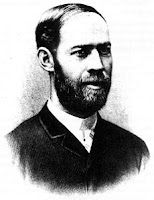Louis-Hector Berlioz was an innovative French composer, born near Grenoble, France, on December 11, 1803. Because of pressure from his father, a physician, Hector went to Paris in 1821 to enroll in medical school. While there he attended many opera performances. He also studied music at the Paris Conservatory.
In 1824 the young student abandoned medical studies but continued to compose music. When his parents refused to support him, Hector taught music lessons and wrote articles. He completed his most individual work, Symphonie fantastique, in 1830. That year he also won a prestigious music prize that required him to live in Italy.
After his return to Paris in 1832, Berlioz met the Irish actress Harriet Smithson, whom he married the following year. Because his unusual compositions failed to win any recognicion in France, Berlioz was forced to earn a living as a music librarían and by writing essays and music criticism.
Finally, Berlioz did begin to win fame outside France. In 1843 he made a triumphant tour of Germany, conducting his own compositions. He had equally successful tours to Austria, Hungary, Russia, and England.
In Paris, though, his genius continued to go unrecognized. His great opera, The Trojans at Carthage, was only a partial success at its first performance in 1863. Discouraged, Berlioz stopped composing and writing. He died in Paris on March 8, 1869.
Since then his reputation has steadily grown. Berlioz is now regarded as one of the world's foremost composers, one of the first great orchestral conductors, and a very skilled writer on musical topics.




























.jpg)












.jpg)